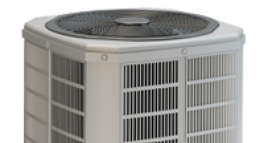Removing wood paneling isn’t too tricky with some patience and the right tools. But it can be tedious and frustrating if you rush into the job without the right knowledge. Learn how to remove wood paneling that’s nailed onto drywall and wall studs, or glued in place.
Wood Paneling Removal: Things You’ll Need
Here are the tools you’ll need to remove your wood paneling:
- Plastic or canvas drop cloth
- Flathead screwdriver
- Pliers
- Hammer
- Pry bar
- Drywall putty
- Chisel
- Heat gun (for glued wood paneling)
Step 1: Clear the Room Before Removing Wood Paneling
Removing wood paneling can get messy, so it’s best to clear the room first.
- Take pictures off the walls.
- Cover furniture with your drop cloth, or move it out of the room.
Next, you’ll need to remove any baseboards, light switch plates, outlet covers, and molding.
Note: Go slowly and be careful if you have molding or baseboards to remove. It’s better to go slowly and do it right than turn it into a race and crack or damage your molding/baseboard.
Here’s how to start the removal process.
- Slide your flathead screwdriver between the molding/baseboard and wood paneling.
- Gently pry until you create about a quarter inch of space.
- Use your pliers to remove any exposed nails.
- Carefully remove the molding or baseboard from the wall.
- Unscrew and remove any light switch plates and outlet covers.
- Store all items in a safe place where you can easily find them later.
Step 2: Look Behind the Wood Paneling
Now, you’ll need to determine whether your wood paneling is nailed in or glued on. Here’s how.
- Place your pry bar in a corner near the flooring, where two walls meet.
- Use your hammer to carefully tap your pry bar within the seam where the two walls meet.
- Wiggle the pry bar to loosen the wood paneling.
- Use your pliers to pull out any nails that come loose.
- Gently pry the panel away from the wall to see whether it’s glued in place or nailed against drywall/wall studs.
Step 3: Remove the Panels
These general removal steps apply to tongue-and-groove, shipboard, and barn paneling. If you’re working with tongue-and-groove panels, it’s easier to pry away the tongue side first.
For paneling nailed to studs
- Pry away the panel using your pry bar and hammer.
- Pull out nails using pliers as they come loose.
- After removing every nail, pull away the paneling.
- Stack your panels in a pile or dispose of them responsibly.
- Continue until you’ve removed every panel.
- Use drywall putty to patch nail holes.
- Add new paneling or install drywall over exposed studs.
For paneling nailed to drywall
- Work slowly to avoid damaging the drywall.
- Pry away the first panel using your pry bar and hammer.
- Pull out nails using pliers as they come loose.
- After removing every nail, use your pry bar to gently ease away the wood panel.
- Carefully wedge your chisel or pry bar between the next panel and repeat.
- Continue until you’ve removed every panel.
- Use drywall putty to patch nail holes.
- Dispose of unwanted paneling responsibly in a dumpster or garbage bin.
If you damage your drywall, it’s OK. Simply replace the damaged drywall with a new sheet, or use a joint compound to repair the damage. If you use a joint compound, be sure to sand it down and repaint to match the rest of your walls.
For paneling glued in place
- Work slowly to avoid damaging the drywall.
- Pry away as much of the panel as possible using your chisel and hammer.
- Stop once you get to the glued-on portion.
- Beginning with the lowest setting, hold the heat gun about six inches from the section of paneling that you’ve lifted.
- Keep moving your heat gun around to avoid burning the panel.
- As the glue softens, pry the panel away.
- Continue to apply heat as you remove the panel with your free hand.
- Scrape softened glue residue from the drywall using your chisel.
- Continue until you’ve removed every panel.
- Eliminate remaining glue residue from the drywall using a fine-grit sandpaper, or your heat gun and chisel if necessary.
- Use drywall putty to patch any holes.
- Dispose of unwanted paneling responsibly.

Conclusion
Removing wood paneling yourself is a great DIY project. But when major systems or appliances break down—like your HVAC or refrigerator—you might need some help.
With a Home Warranty Service Agreement from 2-10 Home Buyers Warranty (2-10 HBW), you can protect your budget against big out-of-pocket costs while plugging yourself in to our network of Service Contractors. Find a plan that’s right for you and give yourself the peace of mind you deserve.









